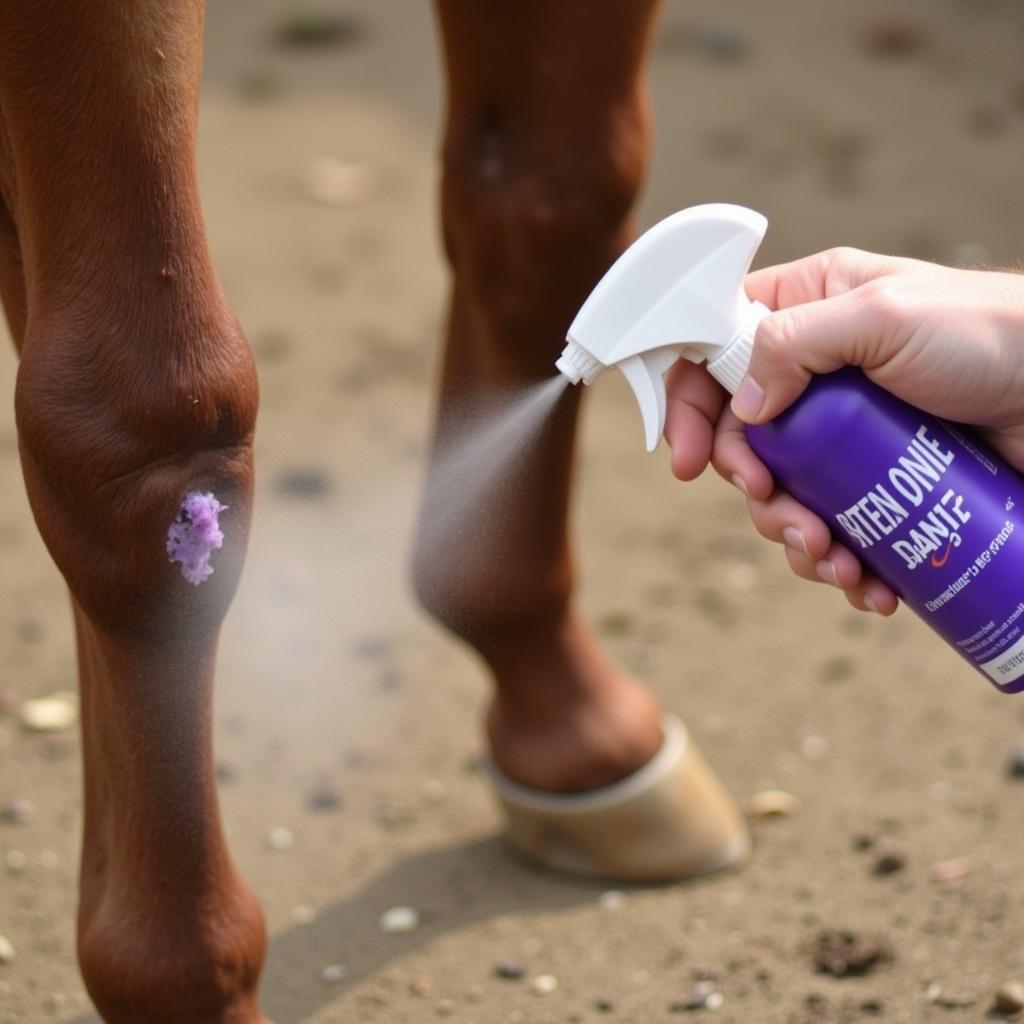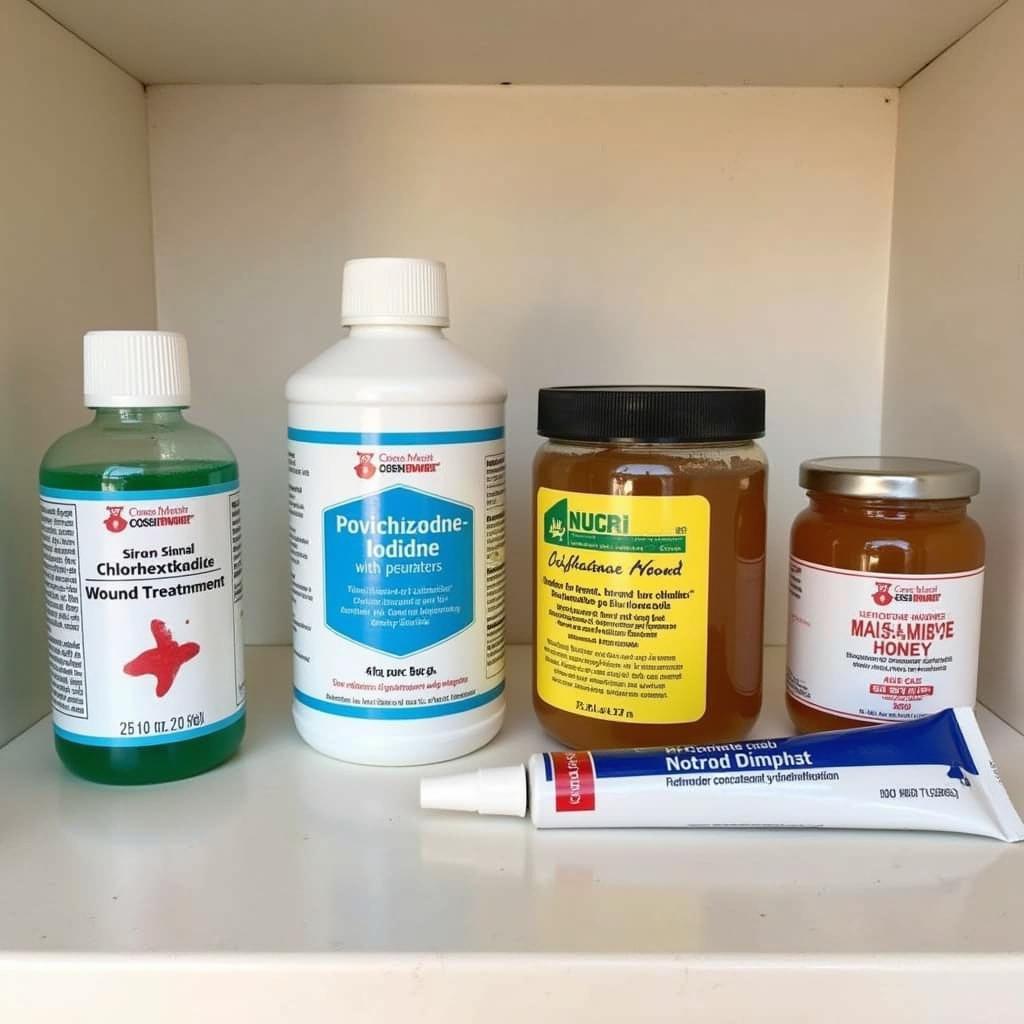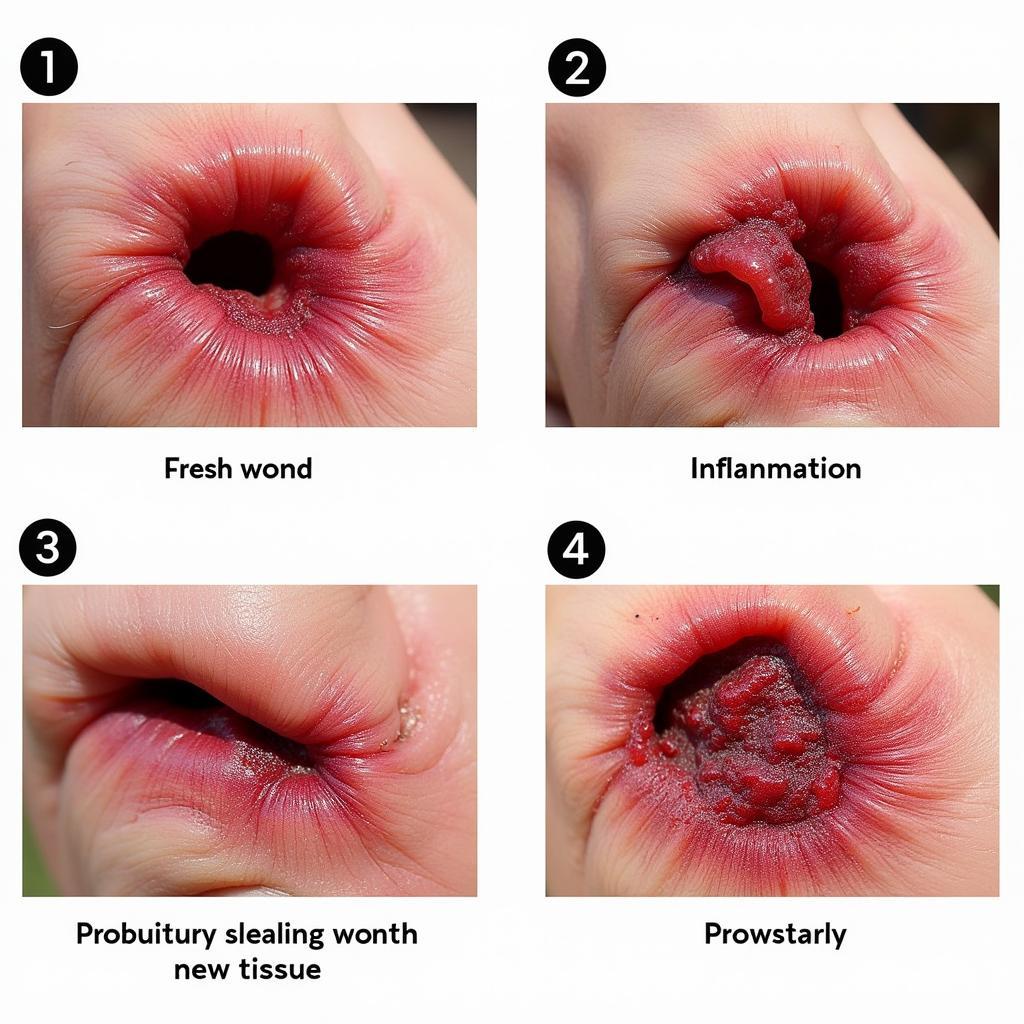Purple Spray For Horse Wounds is a common sight in many barns. But what exactly is it, when should you use it, and are there alternatives? This comprehensive guide will delve into the world of topical wound treatments for horses, focusing on the popular purple sprays, their benefits, drawbacks, and everything you need to know to ensure your equine companion receives the best possible care.
Understanding Purple Spray for Horses
Purple wound spray, often containing gentian violet or similar ingredients, is an antiseptic and antifungal treatment used on minor cuts, abrasions, and skin irritations in horses. It’s known for its vibrant color, making it easy to see where it’s been applied. This can be particularly helpful when treating wounds in hard-to-reach areas or on horses with dark coats.
What are the Ingredients in Purple Spray?
The primary active ingredient in most purple sprays is gentian violet, a dye with antiseptic and antifungal properties. Some formulations may also include other ingredients like alcohol, which can further aid in disinfection, or other antiseptics. It’s important to carefully read the label of any purple spray you’re considering to understand its specific composition.
 Applying Purple Spray to a Horse's Leg Wound
Applying Purple Spray to a Horse's Leg Wound
When to Use Purple Spray
Purple spray is typically suitable for superficial wounds like minor cuts, scrapes, abrasions, and some fungal infections like rain rot. It can create a barrier against bacteria and fungi, helping to prevent infection and promote healing.
When Not to Use Purple Spray
While generally safe for minor wounds, purple spray is not appropriate for deep punctures, severe lacerations, or wounds involving joints or tendons. These types of injuries require professional veterinary attention. Additionally, avoid using purple spray near the eyes or mucous membranes.
Alternatives to Purple Spray for Horse Wounds
While purple spray can be an effective treatment for minor wounds, several alternatives exist. These include:
- Chlorhexidine: A broad-spectrum antiseptic effective against bacteria, fungi, and some viruses.
- Povidone-iodine: Another common antiseptic solution that can be used to cleanse wounds.
- Honey: Certain types of honey have natural antibacterial properties and can promote healing.
- Wound ointments: Various ointments containing antibiotics or other healing agents are available.
 Alternative Horse Wound Treatments: Chlorhexidine, Povidone-Iodine, Honey, and Wound Ointments
Alternative Horse Wound Treatments: Chlorhexidine, Povidone-Iodine, Honey, and Wound Ointments
Choosing the Right Treatment
Selecting the appropriate wound treatment depends on the nature and severity of the injury. For minor scrapes and abrasions, purple spray or a gentle antiseptic like chlorhexidine may suffice. However, for more serious wounds, always consult your veterinarian.
How to Apply Purple Spray to Horse Wounds
Before applying purple spray, ensure the wound area is clean and free of debris. Gently cleanse the wound with mild soap and water or a saline solution. Once clean, hold the spray bottle a few inches away from the wound and apply a thin, even layer. Avoid over-spraying.
Tips for Wound Care
- Monitor the wound daily for any signs of infection, such as increased swelling, heat, redness, or pus.
- Keep the wound clean and dry.
- If the wound doesn’t show signs of improvement within a few days, or if it worsens, contact your veterinarian.
 Stages of Horse Wound Healing: Initial Injury, Inflammation, Proliferation, and Maturation
Stages of Horse Wound Healing: Initial Injury, Inflammation, Proliferation, and Maturation
Conclusion
Purple spray for horse wounds can be a valuable addition to your equine first-aid kit. However, remember that it’s best suited for superficial injuries. For deeper or more serious wounds, always seek professional veterinary advice. By understanding the proper use and limitations of purple spray, you can contribute to the health and well-being of your equine companion.
FAQ
- Can I use human purple spray on my horse? No, always use products specifically formulated for animals.
- How often should I apply purple spray? Follow the instructions on the product label, typically once or twice daily.
- Will purple spray stain my horse’s coat? Yes, it can stain, especially lighter-colored coats.
- Can I use purple spray on a foal? Consult your veterinarian before using any medication on a foal.
- Is purple spray painful for horses? It shouldn’t be painful, but some horses may experience mild stinging.
- What should I do if my horse licks the purple spray? While generally not harmful in small quantities, try to prevent your horse from licking treated areas.
- Are there any side effects of using purple spray? Allergic reactions are rare but possible. Discontinue use if you notice any adverse reactions.
Need help? Contact us! Phone: 0772127271, Email: [email protected] Or visit us at: QGM2+WX2, Vị Trung, Vị Thuỷ, Hậu Giang, Việt Nam. We have a 24/7 customer service team.